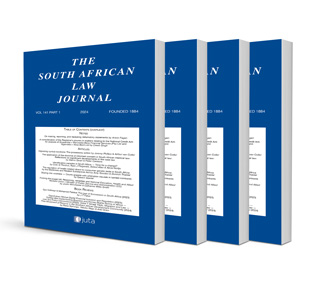
Shape up or ship out! — On establishing that a shape has ‘acquired distinctiveness’ for trade mark purposes
Author Michael Tsele
ISSN: 1996-2177
Affiliations: BA LLB (Rhodes)
Source: South African Law Journal, Volume 137 Issue 3, p. 528-564
Abstract
This article concerns a controversial topic in trade mark law: the proper test that must be applied when determining whether a shape mark has acquired distinctiveness. The first part traces the source of the controversy and analyses recent developments in comparative jurisdictions to unpack the nuances in the debate as to the proper approach to establishing acquired distinctiveness. Here I argue that there are, in fact, no less than three different tests. I then consider the position in South Africa, particularly in the light of the Supreme Court of Appeal’s decision in Société des Produits Nestlé SA v International Foodstuffs Co [2015] 1 All SA 492 (SCA). I aim to debunk some misconceptions particularly with respect to claims that South Africa is now out of line with Europe, inter alia because the SCA has abandoned a standard set in Beecham Group Plc v Triomed (Pty) Ltd 2002 (4) SA 193 (SCA). I take a different perspective. First, I contend that Beecham itself is now questionable authority, given recent developments in trade mark law. Secondly, contrary to several commentators’ views, the Beecham test is different from the test currently favoured in the United Kingdom and Europe. Finally, I suggest how the Supreme Court of Appeal could clarify the proper standard to be applied in South Africa when determining whether a shape mark has acquired distinctiveness.